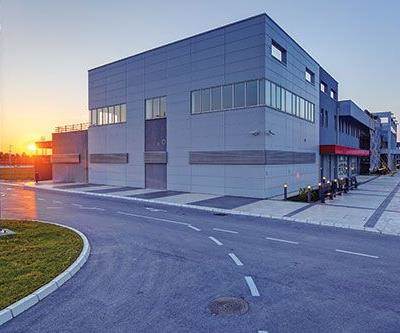The Bottom Line: Tax Extenders Package
The Protecting Americans from Tax Hikes Act of 2015 retroactively extended many important tax provisions and modified others.
On December 18, the U.S. Congress passed and President Obama subsequently signed the Protecting Americans from Tax Hikes Act of 2015 (the Act), commonly known as the “Tax Extenders Package.” Without passage of this legislation, which retroactively extended many important tax provisions, hundreds of thousands of individuals and companies would have seen a higher tax bill for 2015. Some provisions also have important modifications that will affect businesses. Most importantly, several of these provisions have been made permanent, which is great news. Here is a summary of the most prominent tax provisions affecting mold builders:
Increased expensing limitations for Section 179 property. The legislation permanently extends the small business expensing limitation and phase-out amounts, which had been in effect from 2010 to 2014, to $500,000 and $2 million, respectively. Prior to this legislation, the amounts had been reduced to $25,000 and $200,000, respectively. The expensing limitation is modified by indexing both of those limits for inflation beginning in 2016. Air conditioning and heating units placed in service in tax years beginning after 2015 are also eligible for expensing.
Research tax credit. There are several key points to be aware of related to the credit for increasing research activities. First, the credit has been permanently extended. In addition, for tax years beginning after December 31, 2015, the Act allows eligible small businesses with average sales of less than $50 million over the prior three tax years to claim the credit against the Alternative Minimum Tax (AMT) and small start-up companies with less than $5 million of gross receipts to claim the credit up to $250,000 a year against their FICA payroll tax liability.
Mold builders that are developing new tool designs, developing part-specific fixturing or manufacturing processes, or improving production processes through automation may qualify for the research tax credit.
Bonus depreciation. The Act extends bonus depreciation for assets acquired and placed in service during 2015 through 2019. For property placed in service during 2015, 2016 and 2017, the bonus depreciation percentage is 50 percent. This percentage phases down to 40 percent in 2018 and 30 percent in 2019. In addition, businesses may elect to accelerate the use of AMT credits in lieu of bonus depreciation under special rules for property placed in service during 2015.
Work opportunity tax credit. The legislation extends the work opportunity tax credit (WOTC) through 2019. This credit rewards companies for hiring specific targeted groups, such as qualified veterans, food stamp recipients and ex-felons. In addition, beginning in 2016, the credit has been modified to apply to employers who hire qualified long-term-unemployed individuals, those who have been unemployed for 27 weeks or more. The credit is also increased with respect to such long-term-unemployed individuals to 40 percent of the first $6,000 of wages paid. This tax credit is one of the few that may offset the AMT, making it particularly advantageous to those companies subject to the AMT.
§179D energy-efficient commercial buildings deduction.
Available to taxpayers implementing energy-efficiency improvements to lighting, heating, cooling, ventilation and hot water systems of commercial buildings, this provision allows for accelerated deductions worth as much as $1.80 per square foot. The legislation extended these deductions through 2016.
Additional Provisions
Here is a complete list of provisions addressed by the Act:
Permanent Extensions
Tax Relief for Families and Individuals
• Child tax credit
• American opportunity tax credit
• Earned income tax credit
• Deduction for certain expenses of elementary and secondary school teachers
• Parity for exclusion from income for employer-provided mass transit and parking benefits
• Deduction of state and local general sales taxes
Incentives for Charitable Giving
• Special rule for contributions of capital gain real property made for conservation purposes
• Tax-free distributions from individual retirement plans for charitable purposes
• Charitable deduction for contributions of food inventory
• Tax treatment of certain payments to controlling exempt organizations
• Basis adjustment to stock of S corporations making charitable contributions to property
Incentives for Growth, Jobs, Investment and Innovation
• Research credit
• Employer wage credit for employees who are active duty members of the uniformed services
• 15-year straight-line cost recovery for qualified leasehold improvements, qualified restaurant property and qualified retail improvement property
• Increased expensing limitations and treatment of certain real property as section 179 property
• Treatment of certain dividends of regulated investment companies
• Exclusion of 100 percent of gain on certain small business stock
• Reduction in S-corporation recognition period for built-in gains tax
• Subpart F exception for active financing income
Real Estate Investment
• Temporary minimum low-income housing tax credit rates for non-Federally subsidized buildings
• Military housing allowance exclusion for determining whether a tenant in certain counties is low-income
• RIC-qualified investment entity treatment under FIRPTA
Extensions through 2019
• New markets tax credit
• Work opportunity tax credit
• Bonus depreciation
• Look-through treatment of payments between related controlled foreign corporations under foreign personal holding company rules
Extensions through 2016
Tax Relief for Families and Individuals
• Exclusion from gross income of discharge of qualified principal residence indebtedness
• Mortgage insurance premiums treated as qualified residence interest
• Above-the-line deduction for qualified tuition and related expenses
Incentives for Growth, Jobs, Investment, and Innovation
• Indian employment tax credit
• Railroad track maintenance credit
• Mine rescue team training credit
• Qualified zone academy bonds
• Classification of certain race horses as three-year property
• Seven-year recovery period for motorsports entertainment
• Accelerated depreciation for business property on an Indian reservation
• Election to expense mine safety equipment
• Special expensing rules for certain film and television
• Deduction allowable with respect to income attributable to domestic production activities in Puerto Rico
• Empowerment zone tax incentives
• Temporary increase in limit on cover over of rum excise taxes to Puerto Rico and the Virgin Islands
• American Samoa economic development credit
• Moratorium on medical device excise tax
Incentives Energy Production and Conservation
• Credit for non-business energy property
• Credit for two-wheeled plug-in electric vehicles
• Second-generation biofuel producer credit
• Biodiesel and renewable diesel incentives
• Production credit for Indian coal facilities
• Credits with respect to facilities producing energy from certain renewable resources
• Credit for energy-efficient new homes
• Special allowance for second-generation biofuel plant property
• Energy efficient commercial buildings deduction
• Special rule for sales or dispositions to implement FERC or State electric restructuring policy for qualified electric utilities
• Excise tax credits relating to alternative fuels
• Credit for new qualified fuel cell motor vehicles.
Related Content
MMT Chats: 4 Keys to a Successful Mold-Building Operation: Innovation, Transparency, Accessibility and Relationship
MoldMaking Technology Editorial Director Christina Fuges chats with Steve Michon, co-owner of Zero Tolerance in Clinton Township, Michigan, about the excitement of solving problems, the benefits of showing gratitude, the real struggle with delegation and the importance of staying on top of technology. This episode is brought to you by ISCAR with New Ideas for Machining Intelligently.
Read MoreMaking Quick and Easy Kaizen Work for Your Shop
Within each person is unlimited creative potential to improve shop operations.
Read MoreMaking Mentoring Work | MMT Chat Part 2
Three of the TK Mold and Engineering team in Romeo, Michigan join me for Part 2 of this MMT Chat on mentorship by sharing how the AMBA’s Meet a Mentor Program works, lessons learned (and applied) and the way your shop can join this effort.
Read MoreSteps for Determining Better Mold Prices
Improving your mold pricing requires a deeper understanding of your business.
Read MoreRead Next
New Property Regulations - Capitalization vs. Expense
Federal and state income tax compliance can be a burden for mold builders. The tax code and related guidance changes daily, creating both opportunities and exposure. This series aims to provide industry-specific guidance to help mold builders minimize these burdens within the letter of the law.
Read MoreHow to Use Continuing Education to Remain Competitive in Moldmaking
Continued training helps moldmakers make tooling decisions and properly use the latest cutting tool to efficiently machine high-quality molds.
Read MoreReasons to Use Fiber Lasers for Mold Cleaning
Fiber lasers offer a simplicity, speed, control and portability, minimizing mold cleaning risks.
Read More




















